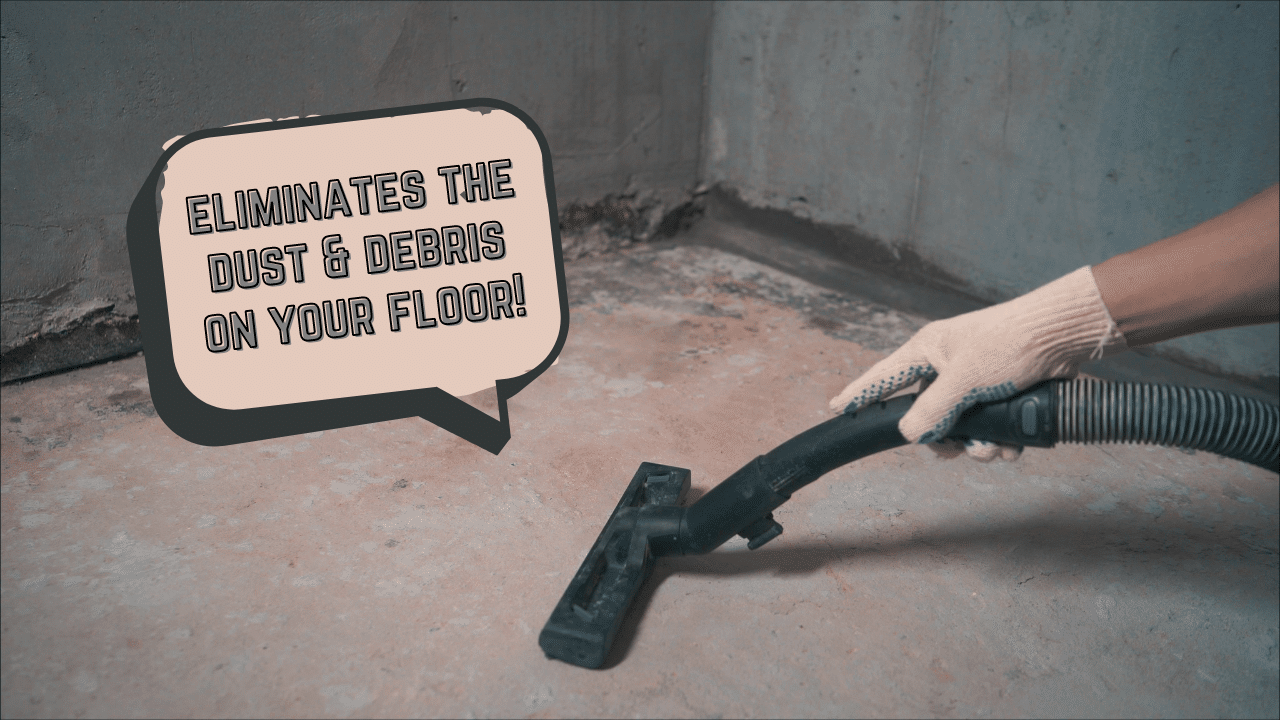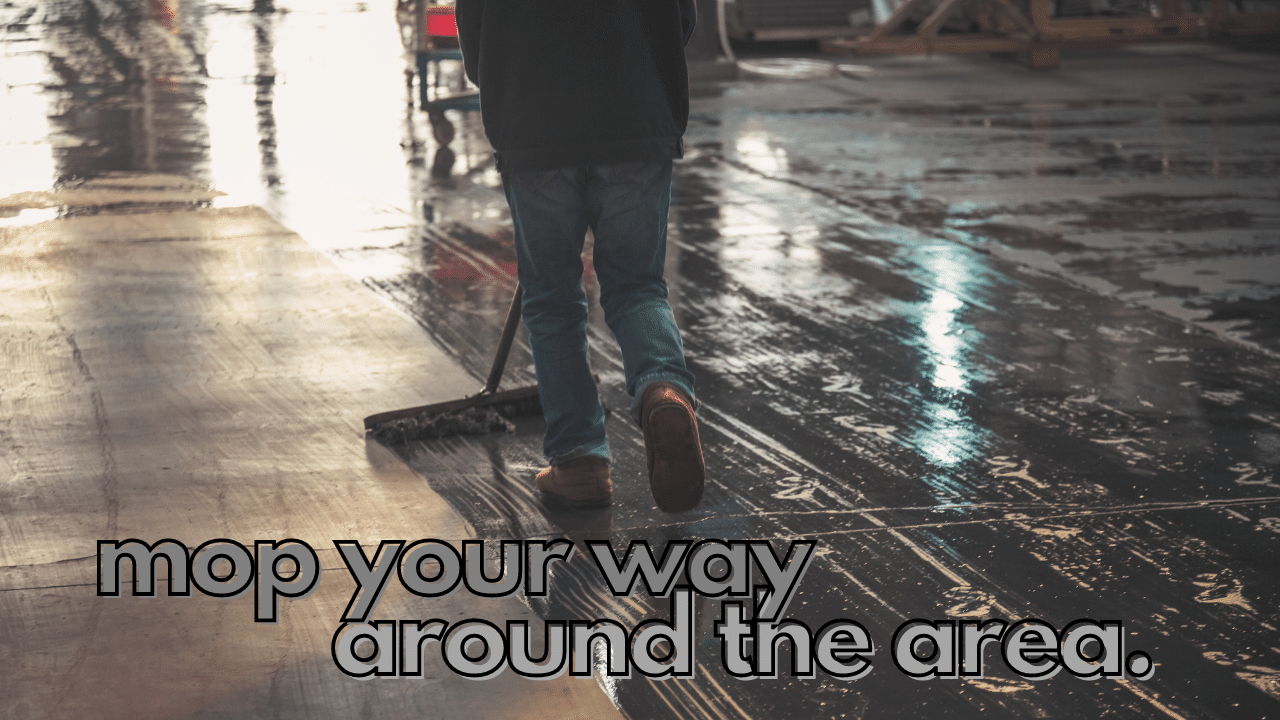Unsealed concrete floors have long since been a favorite choice of many homeowners– given their durability and versatility.
Though it had humble beginnings as a favored material for standard driveways and garages, it’s now used in many indoor and outdoor settings for that added touch of sophistication.
But since unsealed concrete is a porous material, it needs regular cleaning as it can be vulnerable to cracks and dirt/stain build-up. (Related: How to Level A Concrete Floor) That said, you will need to follow a specific cleaning method to clean the floors thoroughly.
Expert Tips To Clean Your Unsealed Concrete Floors
Tip 1: Gather all the Right Tools
You will need the correct tools to clean your unsealed concrete floors well. Here are some of them:
Concrete Floor Cleaners
Generally, there are four different cleaning solutions designed for concrete floors.
To ensure you’re using the proper concrete cleaner for your floors at home, don’t hesitate to consult an expert for advice.
Tip 2: The Vacuum is your Best Friend
Many homeowners are under the impression that cleaning unsealed floors is difficult since it doesn’t visibly show dust like polished floors.

However, you’ll be surprised at how better it looks after proper cleaning with a vacuum. This tool helps you eliminate any dust and debris on the floor. If you’re working with a space without any nearby electrical connection– opt to use a cordless vacuum.
Tip 3: Be Mindful of the Visible Stains
Unsealed concrete is a popular flooring material in basements, garages, and workrooms. Though the surface is highly durable, the concrete tends to absorb liquid and thus becomes stained.
In cleaning your unsealed concrete floors, you will need to pay close attention to removing the stains from the surface. Older, deep stains may be lightened, but there may be faint signs left behind in some cases.
Tip 4: Determine the Type of Stain
Word to the wise, knowing the type of stain you’re dealing with on your unsealed concrete floors can make the cleaning process a whole lot easier.
Here’s a quick rundown of the most common stain types in unsealed concrete floors.
Tip 5: After Cleaning the Surface, Mop Your Way Around the Room
Now that you’ve tidied up the floor surface mix three tablespoons of washing soda with one gallon of water. Then, pick one side of the room to start mopping around the area.

Pro tip: After every three sq ft of cleaning, rinse the mop and wring out the water before you carry on with the task.
If you’re working in an enclosed area, ensure proper ventilation by turning on a fan or opening nearby windows. The improved airflow will also dry the floors quicker.
Tip 6: Exterior Concrete Floors Require a Bit More Effort
Keep in mind that your exterior unsealed concrete floors directly deal with harsh weather conditions, plant stains, grease and tire marks, and more. It’s why most professionals advise doing a thorough clean-up at least once a month.
If the floors are too filthy for a simple scrubbing, you may rent a hot water pressure washer (with 3000 PSI or 4 GPM rating).
Also, don’t forget to cover the walls or any surrounding materials when applying harsh chemicals on your floors. This protects them from accidental splashes and any potential damage.
And as we’ve previously mentioned, always try to use safety precautions to be on the safe side.
Tip 7: You Can Use Homemade Concrete Cleaners for Unsealed Floors
Some homeowners opt to use homemade cleaners in scrubbing their unsealed floors– especially if they’re not big fans of using harsh chemicals.
Homemade cleaning solutions can be gentle on the floors. If you’re looking for a simple method to create one: mix ⅛ cups of dishwashing liquid with a gallon of water. You can count on this homemade concrete cleaner to eliminate any visible dirt on the porous surface.
Baking Soda Cleaner
Another way is to use baking soda, which has long since been known to remove odors from your indoor or outdoor concrete floors effectively.
To clean your filthy floors, mix half a cup of baking soda with at least 10 liters of warm water. Add ⅛ cup of dishwashing liquid if you want a more robust solution to remove superficial stains or grime.
Frequently Asked Questions (FAQs)
Can you remove stains on unsealed concrete floors using a detergent?
Yes, it’s possible! Simply pour the liquid detergent on the stained surface or mix powdered detergent with ¼ gallon of water. Leave the solution in the area for a few hours. Afterward, rinse it with warm water before scrubbing the area clean. Once you notice the visible stain has started to fade away, you can rinse it entirely before wiping it dry.
Is it possible to use steam in cleaning unsealed concrete floors?
Yes. In particular, you’ll be taken aback at how steam can easily (and quickly) remove grease stains from unsealed concrete floors.
